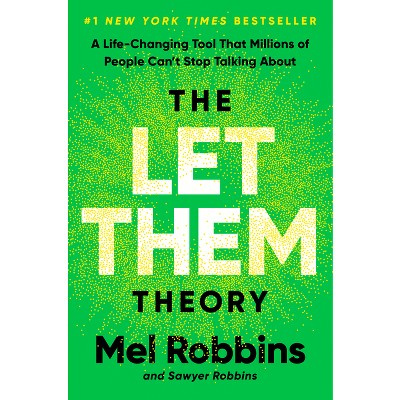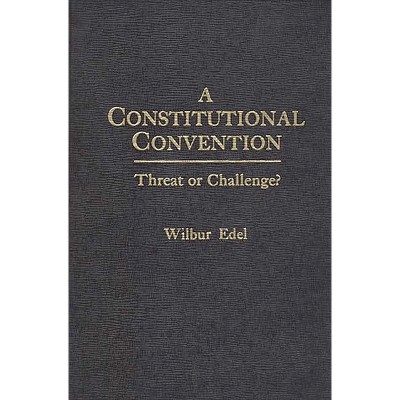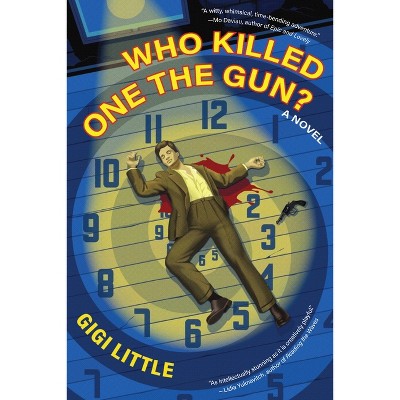Sponsored

Gun Control - by Wilbur Edel (Hardcover)
In Stock
Sponsored
About this item
Highlights
- Federal restrictions on the sale and possession of some firearms were introduced during Prohibition when illegal rumrunners battling for territorial rights commonly used machine guns to destroy the opposition.
- About the Author: WILBUR EDEL is Professor Emeritus of Political Science at Lehman College of the City University of New York.
- 200 Pages
- Freedom + Security / Law Enforcement, Administrative Law & Regulatory Practice
Description
About the Book
Federal restrictions on the sale and possession of some firearms were introduced during Prohibition when illegal rumrunners battling for territorial rights commonly used machine guns to destroy the opposition. More sweeping legislation was not passed until 1968, and from that time on the struggle has been between pro- and anti-control forces, with more controls created at state and local levels than at the federal level. However, the mood in Washington has turned, and the question now is how the country can be weaned away from the violence that pervades every aspect of living, from lawlessness to literature, entertainment, and even children's toys. This book traces the history of these gun control measures from the early days to our own violent age.
This is a study of a part of American history that deals not just with gun control as such, but with basic concepts of personal liberty, government responsibility, and the fear of tyranny. All three of these influenced the people who took up arms in the American Revolution and who, for decades afterward, resisted every effort of the central government to substitute a standing army for the armed militia of the states. As the nation grew in size and population, the need for a standing army became apparent, and the nature of the militia changed from that of a purely state organization to an adjunct of the regular army. Still, the view that private individuals were entitled to purchase and keep firearms for their personal use persisted. That this was not a constitutional right was made clear by the Supreme Court in a series of cases beginning as early as 1876.
Federal restrictions on the sale and possession of some firearms were introduced during Prohibition when illegal rumrunners battling for territorial rights commonly used machine guns to destroy the opposition. More sweeping legislation was not passed until 1968, and from that time on the struggle has been between pro- and anti-control forces, with more controls created at state and local levels than at the federal level. However, the mood in Washington has turned, and the question now is how the country can be weaned from the violence that pervades every aspect of living, from lawlessness to literature, entertainment, and even children's toys.
Book Synopsis
Federal restrictions on the sale and possession of some firearms were introduced during Prohibition when illegal rumrunners battling for territorial rights commonly used machine guns to destroy the opposition. More sweeping legislation was not passed until 1968, and from that time on the struggle has been between pro- and anti-control forces, with more controls created at state and local levels than at the federal level. However, the mood in Washington has turned, and the question now is how the country can be weaned away from the violence that pervades every aspect of living, from lawlessness to literature, entertainment, and even children's toys. This book traces the history of these gun control measures from the early days to our own violent age.
This is a study of a part of American history that deals not just with gun control as such, but with basic concepts of personal liberty, government responsibility, and the fear of tyranny. All three of these influenced the people who took up arms in the American Revolution and who, for decades afterward, resisted every effort of the central government to substitute a standing army for the armed militia of the states. As the nation grew in size and population, the need for a standing army became apparent, and the nature of the militia changed from that of a purely state organization to an adjunct of the regular army. Still, the view that private individuals were entitled to purchase and keep firearms for their personal use persisted. That this was not a constitutional right was made clear by the Supreme Court in a series of cases beginning as early as 1876. Federal restrictions on the sale and possession of some firearms were introduced during Prohibition when illegal rumrunners battling for territorial rights commonly used machine guns to destroy the opposition. More sweeping legislation was not passed until 1968, and from that time on the struggle has been between pro- and anti-control forces, with more controls created at state and local levels than at the federal level. However, the mood in Washington has turned, and the question now is how the country can be weaned from the violence that pervades every aspect of living, from lawlessness to literature, entertainment, and even children's toys.From the Back Cover
This is a study of a part of American history that deals not just with gun control as such, but with basic concepts of personal liberty, government responsibility, and the fear of tyranny. All three of these influenced the people who took up arms in the American Revolution and who, for decades afterward, resisted every effort of the central government to substitute a standing army for the armed militia of the states. As the nation grew in size and population, the need for a standing army became apparent, and the nature of the militia changed from that of a purely state organization to an adjunct of the regular army. Still, the view that private individuals were entitled to purchase and keep firearms for their personal use persisted. That this was not a constitutional right was made clear by the Supreme Court in a series of cases beginning as early as 1876. Federal restrictions on the sale and possession of some firearms were introduced during Prohibition when illegal "rumrunners" battling for territorial rights commonly used machine guns to destroy the opposition. More sweeping legislation was not passed until 1968, and from that time on the struggle has been between pro- and anti-control forces, with more controls created at state and local levels than at the federal level. However, the mood in Washington has turned, and the question now is how the country can be weaned from the violence that pervades every aspect of living, from lawlessness to literature, entertainment, and even children's toys.Review Quotes
?Utter's readable Encyclopedia is [a] valuable resource.?-VOYA
"Utter's readable Encyclopedia is Ýa¨ valuable resource."-VOYA
"Utter's readable Encyclopedia is [a] valuable resource."-VOYA
About the Author
WILBUR EDEL is Professor Emeritus of Political Science at Lehman College of the City University of New York. He is the author of several books, including Defenders of the Faith (Praeger, 1987) and A Constitutional Convention (Praeger, 1981).Shipping details
Return details
Frequently bought together

Trending Non-Fiction
















